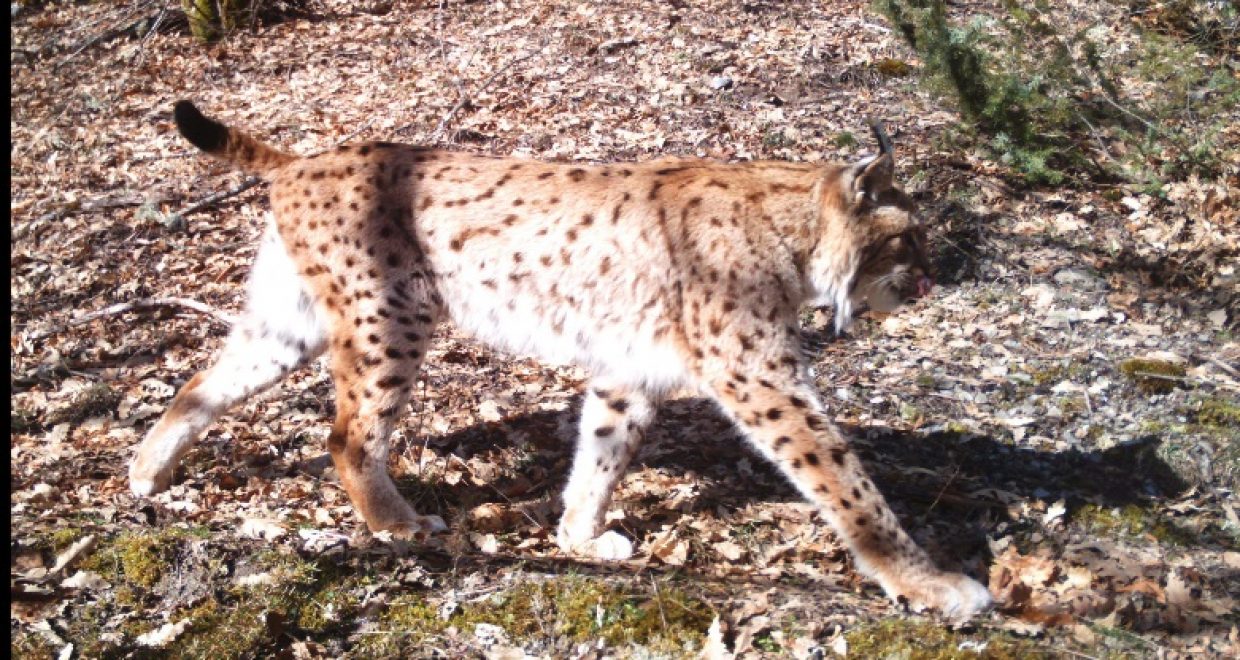Identifying conservation priorities for the Critically Endangered Balkan Lynx
A detailed IUCN Red List assessment placed the Balkan lynx (Lynx lynx balcanicus) just one step away from extinction. The categorisation of this small population as Critically Endangered is based on 10 years of research and conservation efforts in the south-western Balkan region carried out by the Balkan Lynx Recovery Programme. The steep decline of this elusive felid was evident since the 1990s. Conflicts, war-like commotions and civil unrest brought disorder to the Balkan countries, affecting not only the people but also the wildlife of this region. Being a specialised ungulate hunter, the Balkan lynx suffered from poaching and depletion of its prey species, primarily as a result of overhunting.

In 2006, a transboundary project started in Macedonia and Albania that focused on the integral conservation of the Balkan lynx, its prey species and its habitat. The first step towards this long-term effort was gathering local knowledge directly from the people living in its distribution range. This baseline survey looked into the distribution of 12 mammal species in a grid cells of 10×10 km in four countries: Macedonia, Albania, Kosovo and Montenegro. In addition to providing clues for the species’ distribution, locals answered questions about the trend and abundance of these animals, and the potential conflicts with carnivores. Our research, published in Oryx—The International Journal of Conservation, aimed to (1) determine the distribution of the Balkan lynx based on the affirmative answers from the local people; (2) evaluate human–lynx interactions to identify the potential threats to the species’ survival. These results were then used to identify which research and conservation efforts should be prioritised to safeguard the population.

Our results showed that lynx are potentially distributed along the border of the four countries. In total, 108 out of the 207 grid cells analysed revealed high probability of site use by the species. Human–lynx interactions manifest through lynx poaching, damages to livestock and lynx–vehicle collisions. It is possible that 50–100% of the total estimated population could have fallen victim to poaching since the turn of the century. This particular threat, as evident as it may be, is very difficult to tackle due to the low levels of law enforcement in the range countries. Livestock damages caused by the lynx are fairly rare in the region. Nonetheless, it is important to take the compensation system’s poor enforcement into account, since many people are either unaware of the scheme or the damage cannot be properly assessed. With only two documented cases, lynx collisions are a rare occurrence, however the increased road infrastructure effort of the developing countries in the south-west Balkans means this is a potential future threat.

The short-term conservation priorities should be focused on protecting the remaining Balkan lynx population in its natural habitats along with its main prey. Actions should initially focus on the five priority areas defined in our research but also the habitats in between. Law enforcement is a crucial hindrance to nature protection in the range countries. It is necessary to improve and enforce the legal framework in the Balkans for better protection of its wildlife. Active involvement of the key stakeholders like hunters, foresters and livestock breeders is of utmost importance for better monitoring and stricter on-the-ground protection.
If you would like to read more about this study, the article ‘Using questionnaire surveys and occupancy modelling to identify conservation priorities for the Critically Endangered Balkan lynx Lynx lynx balcanicus’ is now freely available until February 1 in Oryx—The International Journal of Conservation.
Photo credits:
1- Camera trap image of a Balkan lynx from Mavrovo National Park, Macedonia. Photo: Macedonian Ecological Society
2- Questionnaire surveys carried out in Kosovo
3- Balkan lynx habitat in Mavrovo National Park, Macedonia. Photo: Dime Melovski
4- Habitat fragmentation by road infrastructure development in Albania. Photo: Dime Melovski






